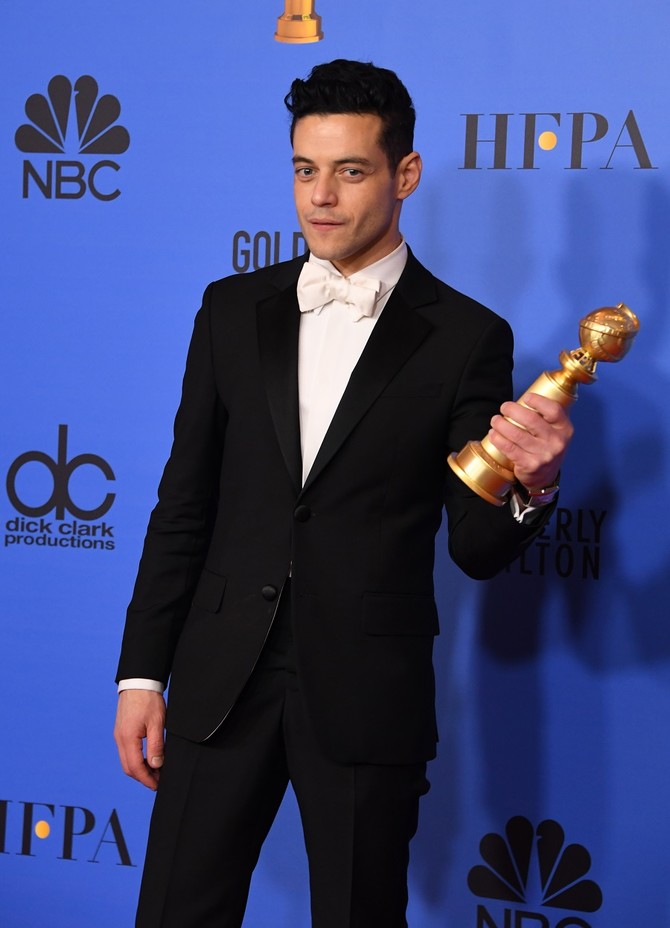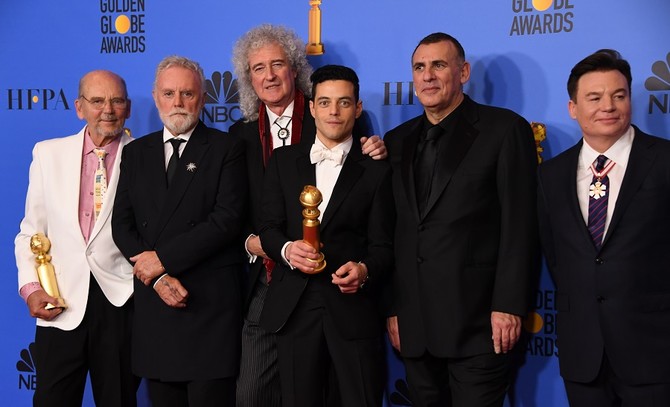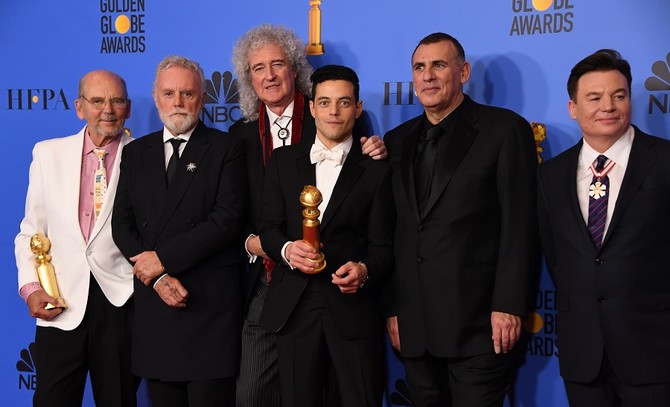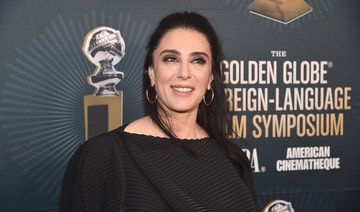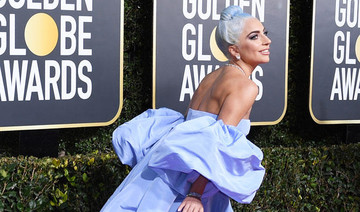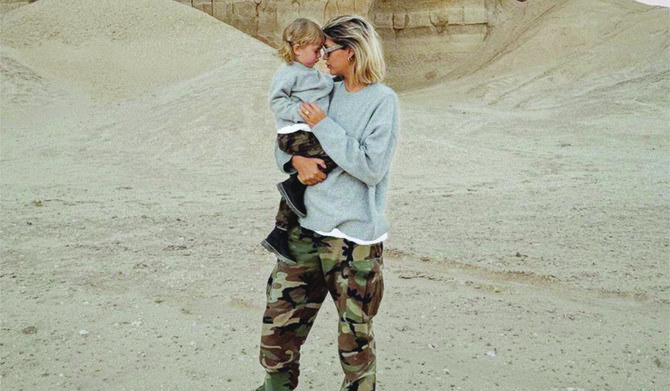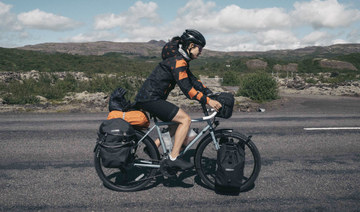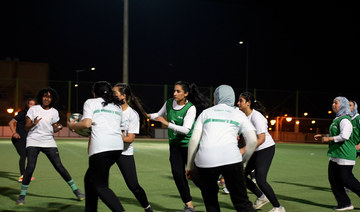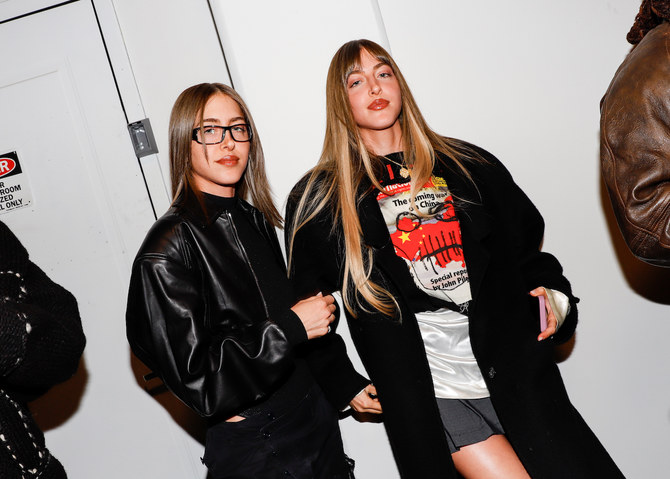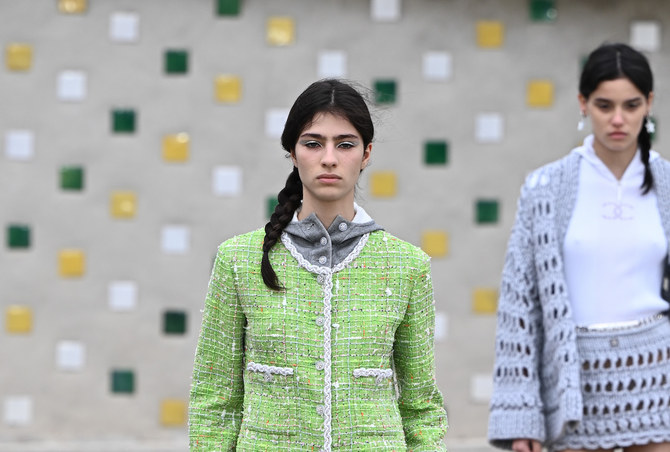DUBAI: Egyptian-American Rami Malek scooped the best actor award at the Golden Globes on Sunday, one of the major awards in the 76th annual ceremony that is seen as a rough precursor to the Oscar nominations to be released this month.
Malek, who went up against fan favorite Bradley Cooper in the category, won the award for his performance as rock icon Freddie Mercury from the British band Queen in the highly-acclaimed blockbuster “Bohemian Rhapsody.”
Beating off a tough bunch in a category that also included veteran Willem Dafoe, Malek received his first Globe trophy, thanking Queen band members Brian May and Roger Taylor, as well as Mercury for “providing the role of a lifetime.”
“This is a profound honor to receive this and to be counted among such extraordinary actors,” he said.
Malek was born in the US to Egyptian immigrants Said Malek and Nelly Abdel-Malek. “My mum and dad left Cairo in 1978. My dad was working as a travel agent there, and he would pick up visitors from the west. Through them he saw this other world that existed and he was fascinated by it,” he recently told British national newspaper The Guardian.
Confessing to be a Queen fan himself, Malek said: "I related it to him being an immigrant struggling to discover his identity. I tried to take everything he was struggling with, his complication, his chaos, his turmoil and this beauty inside of him. He lifted me up to be everything I could be in this film," explained the actor, whose win was quickly applauded up by his Arab fans on Twitter.
Bohemian Rhapsody, directed by Bryan Singer, also bagged the best motion picture award in the drama category, edging out Oscar heavyweight “A Star is Born,” which ultimately walked away with just one Globe trophy for best original song, “Shallow.”
Glenn Close, whose shocked reaction quickly became an internet meme, was hailed as the best actress in a drama movie for “The Wife,” again besting hotly tipped Lady Gaga.
Civil rights dramedy “Green Book,” which didn’t sit well with film critics, won three awards overall, including the best supporting actor in a comedy movie for Muslim star Mahershala Ali, in an awards night that recognized a significantly diverse set of winners.
“Grey’s Anatomy” star Sandra Oh became the first Asian woman to host the Golden Globes, as well as to win a top acting prize in the ceremony, for the TV series “Killing Eve.”
Meanwhile, Nadine Labaki’s “Capernaum” missed out on what could’ve been a historic Golden Globe win.
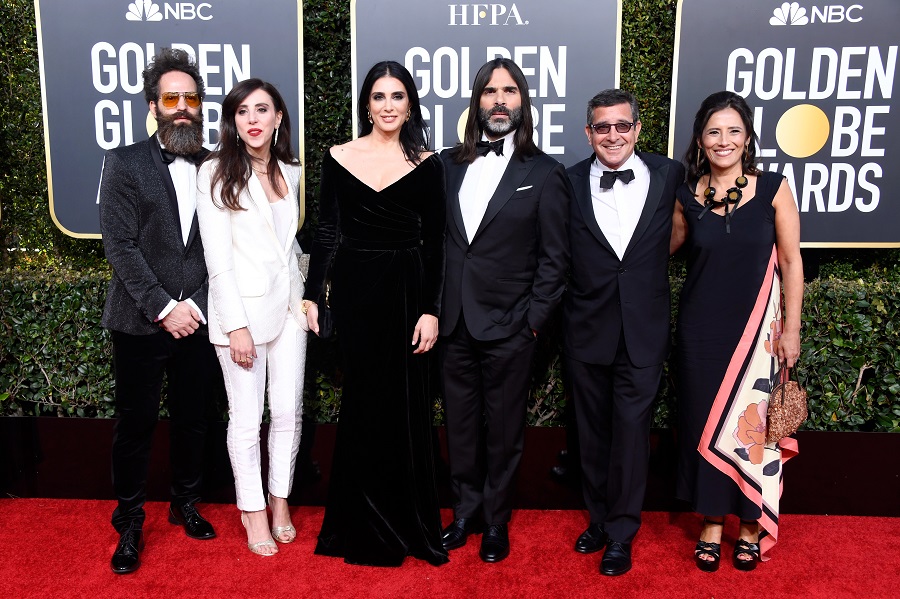
Nadine Labaki with other guests at the Golden Globes red carpet. (AFP)
The movie nominated for best motion picture in the foreign language category was beaten out by Alfonso Cuaron’s black-and-white film “Roma,” which is also seen as a tough contender in the upcoming Oscars.
Although Labaki lost to the Oscar-winning director, her nomination was notable, as she’s the only female director in the category. “I do have this sort of pride being a woman director among all these amazing filmmakers,” she told US-based entertainment website Variety.
“But of course there’s this other surprise when you feel like you’re the only one, when I know that there are so many women making films that are so interesting and so very important out there,” Labaki added.
The film is also Lebanon’s entry to the best foreign language film in the upcoming Oscars. It sits along nine other shortlisted films from different countries, while the final five nominees will be announced on Jan. 22.
Also spelt “Capharnaüm,” the Lebanese drama is about a 12-year-old and his difficult life in Lebanon, which leads to him to sue his parents. The other nominees were Girl (Belgium), Never Look Away (Germany), and Shoplifters (Japan).
The Golden Globes are decided by the 93-member Hollywood Foreign Press Association that recognizes excellence in both film and television.



